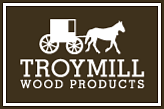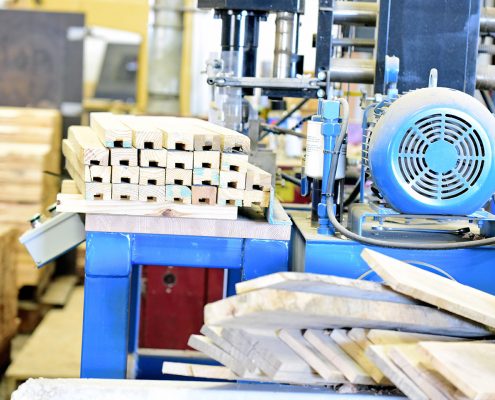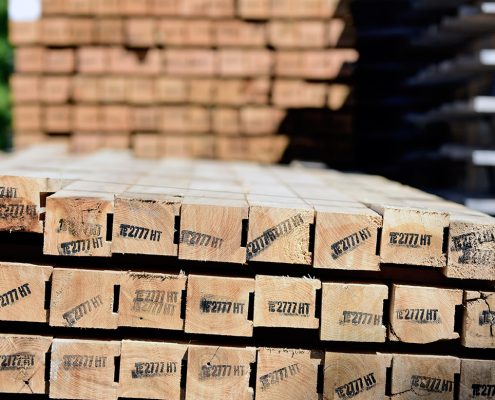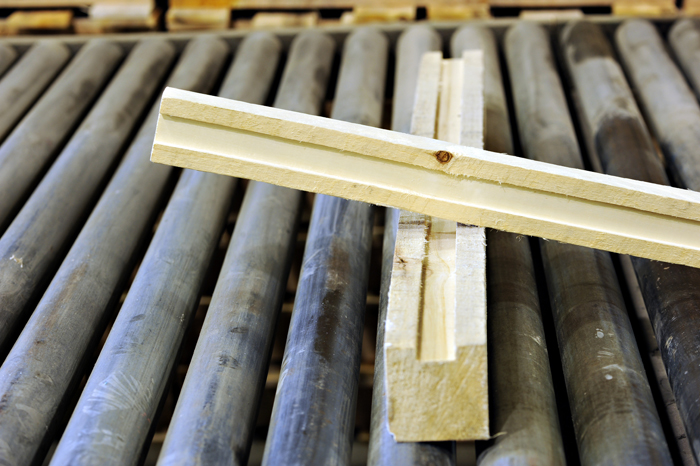Grooved and Cut Stock
Troymill is large producer of high quality Banding Groove Lumber. Available in both Hardwood (HT and non-HT) and Pine, Troymill has the equipment and expertise you’re looking for. Whether you need a banding groove, a strapping groove, a unit or a truckload, Troymill has what you need, when you need it.
- Banding Grooves (down the length of lumber)
- Banding Notches (across the width of lumber)
- Hardwood, Southern Yellow Pine and Spruce
- Heat Treatment, Bark Free for Export Needs (IPPC/ISPM-15)
What is Banding Groove Lumber?
Also referred to as strapping groove lumber, banding groove lumber is dunnage with a ridge cut down the center either lengthwise or crosswise. When securing your load or product, dunnage lumber will not damage the products, whether on a pallet or in a crate. A strap or band fits into the length that was cut, and a secure, safe product protector is set in place. We can also manufacture banding notches, which cut across the width of the lumber, if that is preferable.
Troymill also has the ability to Heat Treat (ALSC Standard) to sterilize our products for export. Upon request, our dunnage lumber with banding groove, will meet ISPM-15 Standards and comply with ALSC regulations.
Banding Groove Lumber Versus Plastic Strapping
With our banding groove lumber, our customers have the ability to use both plastic strapping for their product, or metal banding. Both work well with our lumber, but certain applications call for steel as plastic strapping may just not be strong enough. With banding groove lumber provided by Troymill, you can have secure strapping no matter how large your project is. Our custom manufacturing ensures that the sizing of lumber is cut to perfection, just for your application.
Banding Groove Lumber Versus Steel
Steel strapping is another common choice for the shipping industry, mainly because steel is extremely strong and can hold just about any kind of load. Unfortunately, unlike our softwood dunnage, steel is not only heavy and bulky but it can also be dangerous to work with for shipping employees.
How to Select Your Strapping Material
Apart from steel and plastic, there are many other alternatives to our dunnage lumber with banded grooves, including polyester strapping. How can you make sure you select the best material for your shipping application? Here are some things to consider.
- Load weight, size, and dimensions: Remember, we can cut our dunnage lumber to the exact size and specs you need. While steel can be beneficial for extra-large loads, it can also be dangerous. Plastic or polyester is limited in strength so they are not as effective with large loads.
- Strap gauge and width requirements: Plastic and other materials are easier to cut than steel, so if the steel is not already close to the dimensions you need, that can be a significant obstacle. Our banded groove lumber will be cut or notched to allow for the strap width you need.
- Cost: These days, a lot depends on what is available and how much it costs. Because you can get exactly what you need from Troymill, there is no second-guessing, which is a time and cost savings to begin with.
- Safety hazards: As has already been mentioned, the weight and bulkiness of steel can make it dangerous for workers. Plastic and other lightweight materials can be dangerous in terms of letting the load break free. We ensure our banded groove lumber will be lightweight, strong, and effective.
- Load value: Of course, the value of what is being shipped also should be considered. It would not make sense to spend more on strapping material than the value of the load. Our strapping lumber is always cost-effective and we make sure you get exactly what you need.
After evaluating these points, contact us. We will work with you to review all the same points so we can make sure we give you what you need to secure your load in the safest and most economical way possible.
Banding Groove Lumber FAQs
What Is Banding Lumber?
Banding lumber, also known as strapping lumber or banding strips, refers to narrow pieces of wood typically used to secure, bundle, or band together various items or materials. These strips are often used for the purpose of packaging, containment, or reinforcement.
What Kind of Wood Is Used For Strapping?
The choice of wood for strapping depends on factors such as the intended use, load-bearing requirements, and budget. Hardwood strapping is commonly used in heavy-duty applications where strength and durability are paramount. Softwood strapping is suitable for a wide range of uses, particularly when cost-effectiveness is important. Pressure treated wood strapping is ideal for outdoor or moisture-prone environments where durability is essential. The specific type of wood selected should align with the needs of the application to ensure effective strapping.





